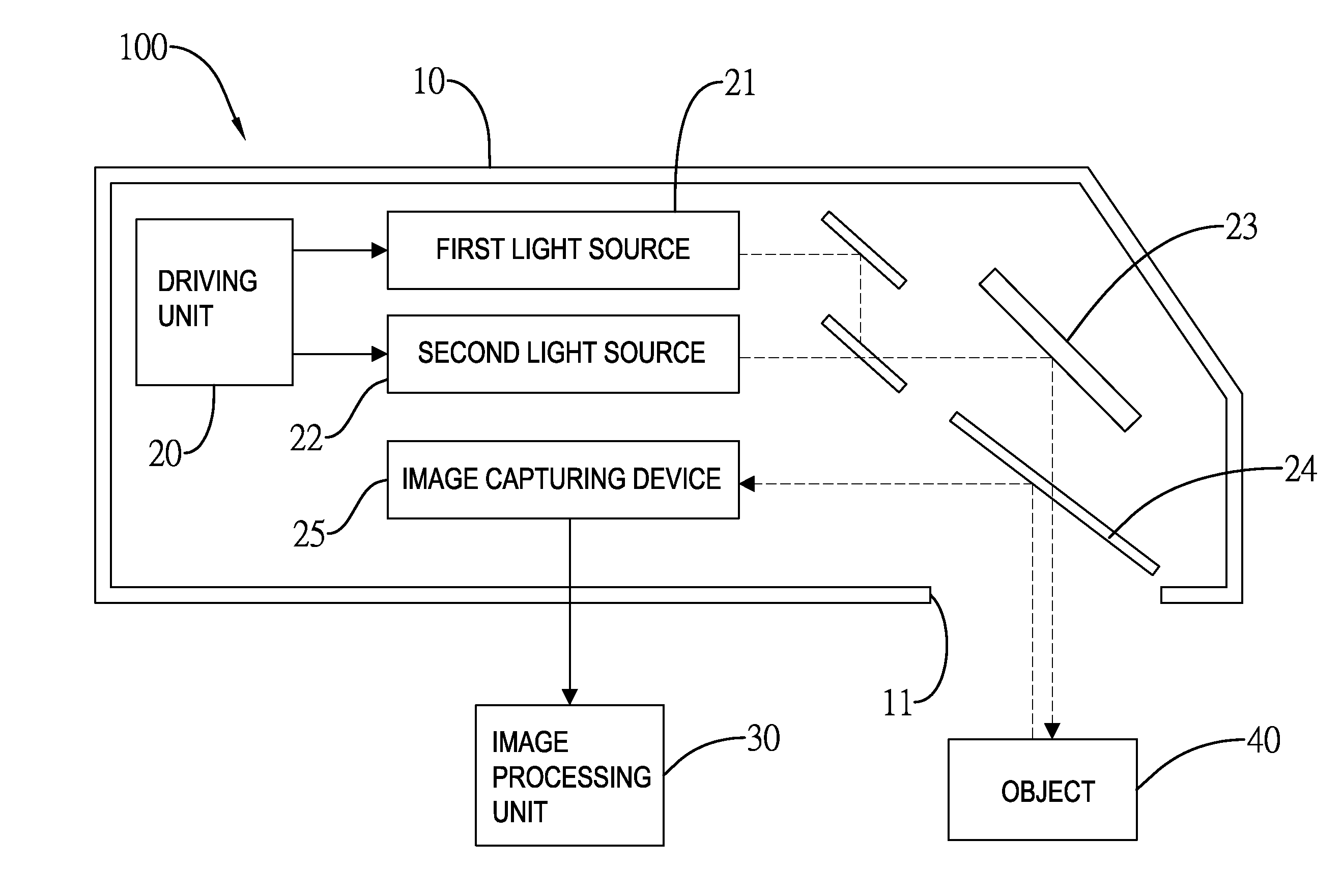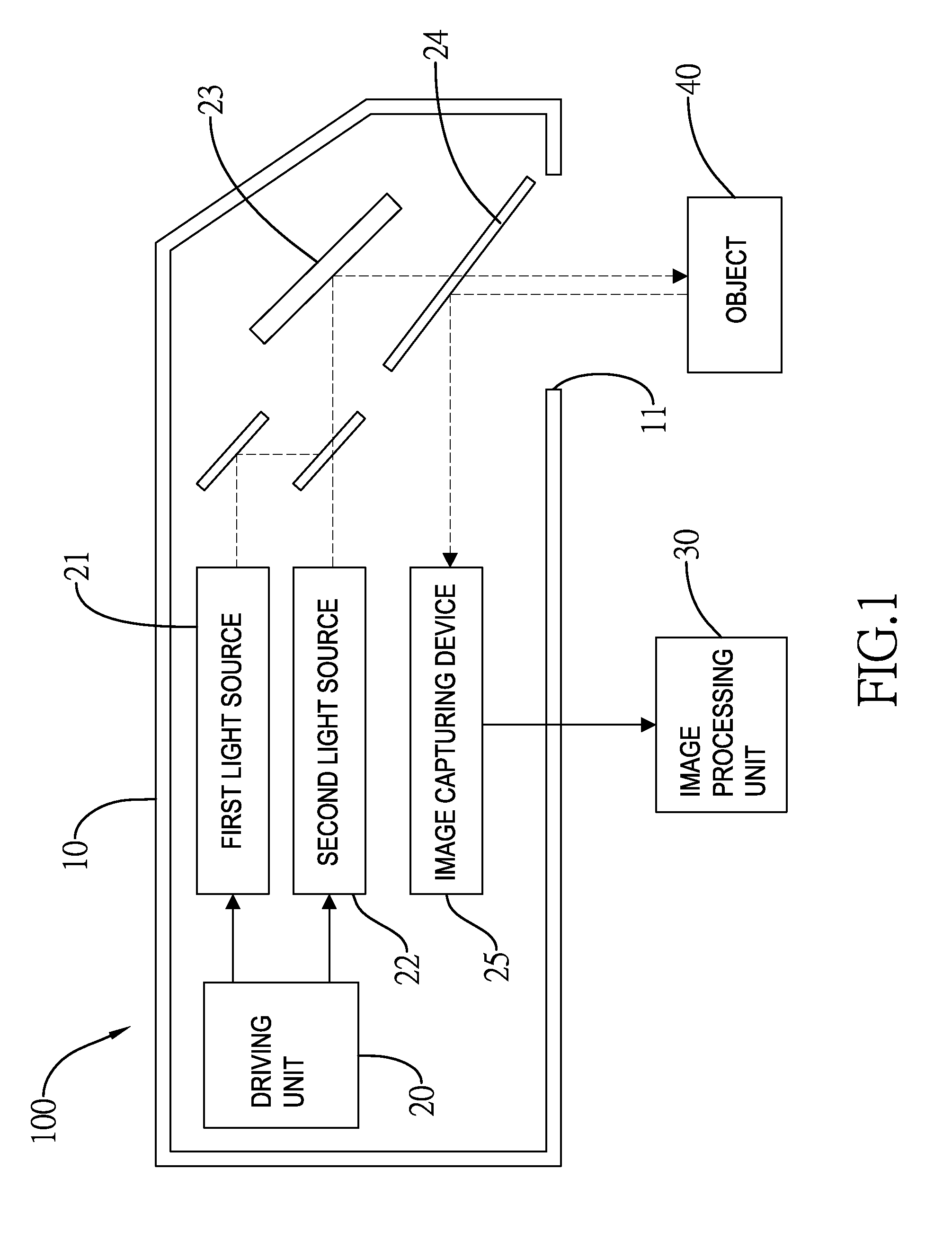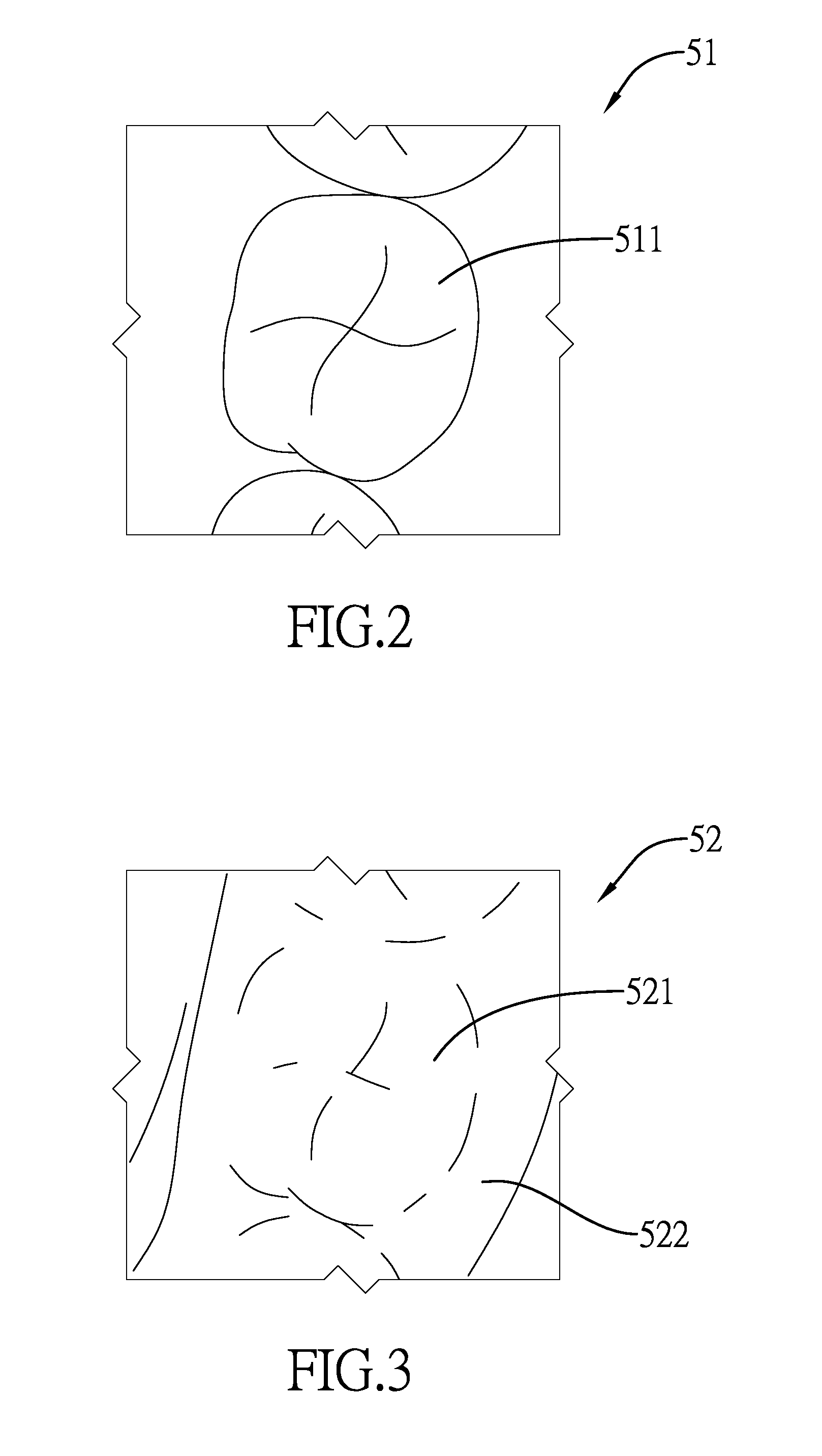Method of constructing tooth images using dual-wavelength light
a dual-wavelength light and tooth image technology, applied in the field of tooth image construction, can solve the problems of missing a lot of details and poor tooth image quality, and achieve the effects of reducing noise, improving accuracy, and reducing nois
- Summary
- Abstract
- Description
- Claims
- Application Information
AI Technical Summary
Benefits of technology
Problems solved by technology
Method used
Image
Examples
Embodiment Construction
[0016]The system employing a method in accordance with the present invention includes a probe 100 and an image processing unit 30. Please refer to FIG. 1. The probe 100 comprises a housing 10 inside which are provided with a driving unit 20, a first light source 21, a second light source 22, a reflecting device 23, a reflector 24, and an image capturing device 25. The image processing unit 30 can be a computer outside the housing 10. The image processing unit 30 connects to the image capturing device 25 for data transmissions.
[0017]A side surface of the housing 10 has an opening 11. The first light source 21 and the second light source are disposed opposite to the reflecting device 23. The reflecting device 23 is mounted on an inner side of the opening 11 and opposite to the opening 11. Moreover, the reflecting device 23 is located on the light output path of the first light source 21 and the second light source 22. The light emitted by the first light source 21 and the second light...
PUM
 Login to View More
Login to View More Abstract
Description
Claims
Application Information
 Login to View More
Login to View More - R&D
- Intellectual Property
- Life Sciences
- Materials
- Tech Scout
- Unparalleled Data Quality
- Higher Quality Content
- 60% Fewer Hallucinations
Browse by: Latest US Patents, China's latest patents, Technical Efficacy Thesaurus, Application Domain, Technology Topic, Popular Technical Reports.
© 2025 PatSnap. All rights reserved.Legal|Privacy policy|Modern Slavery Act Transparency Statement|Sitemap|About US| Contact US: help@patsnap.com



